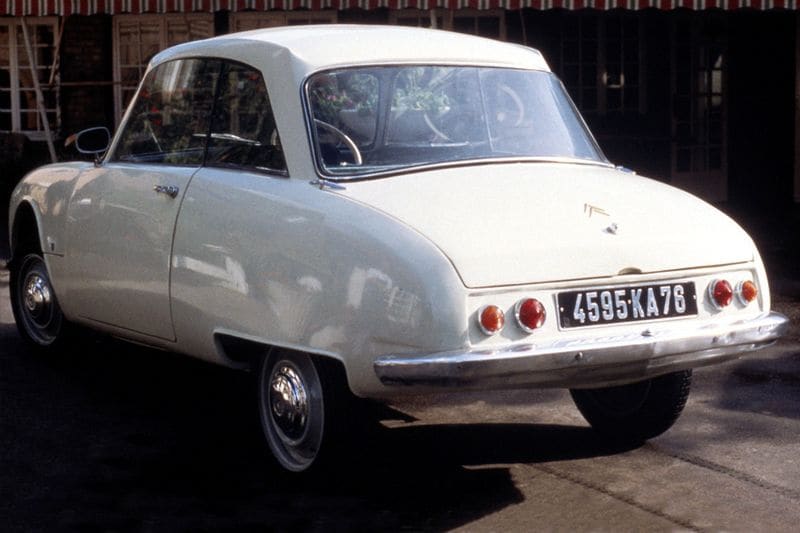
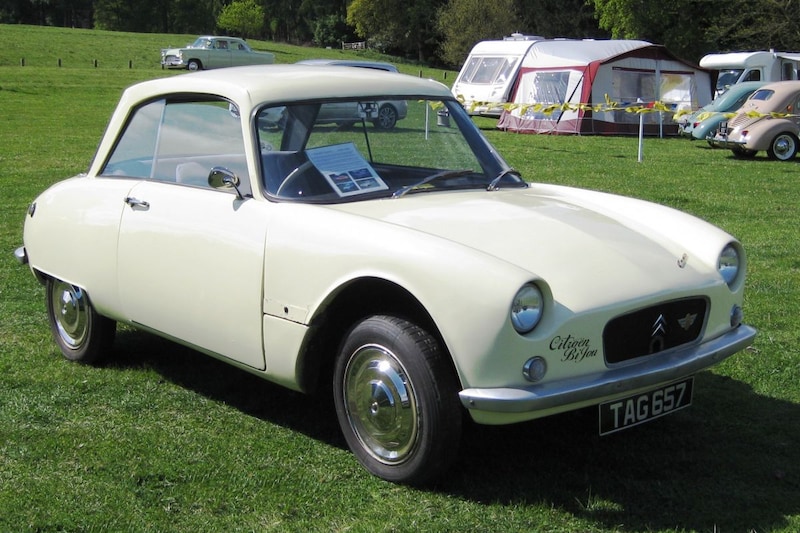
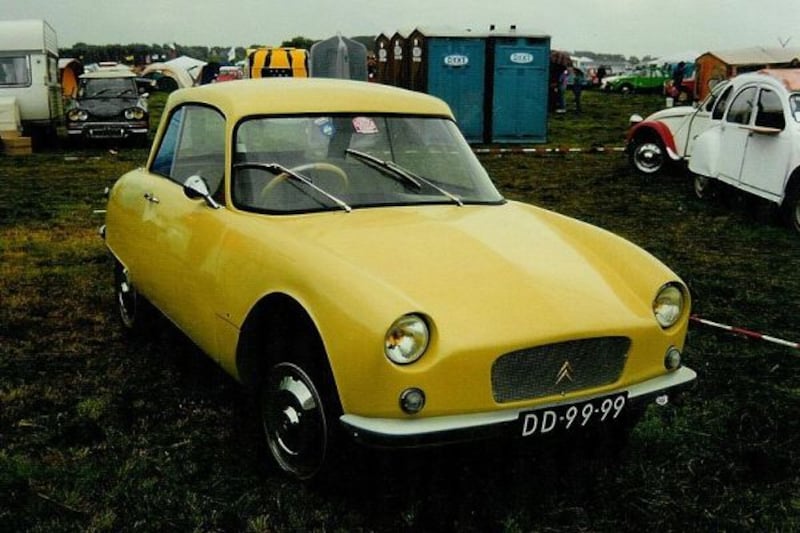

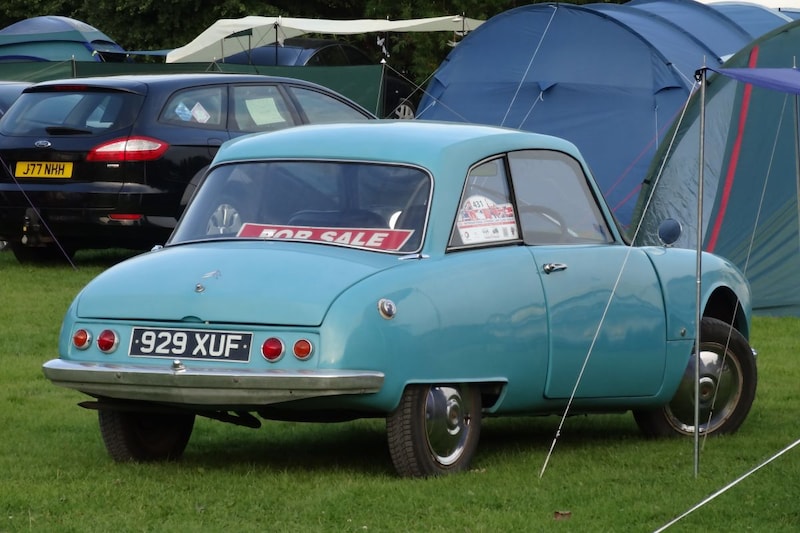
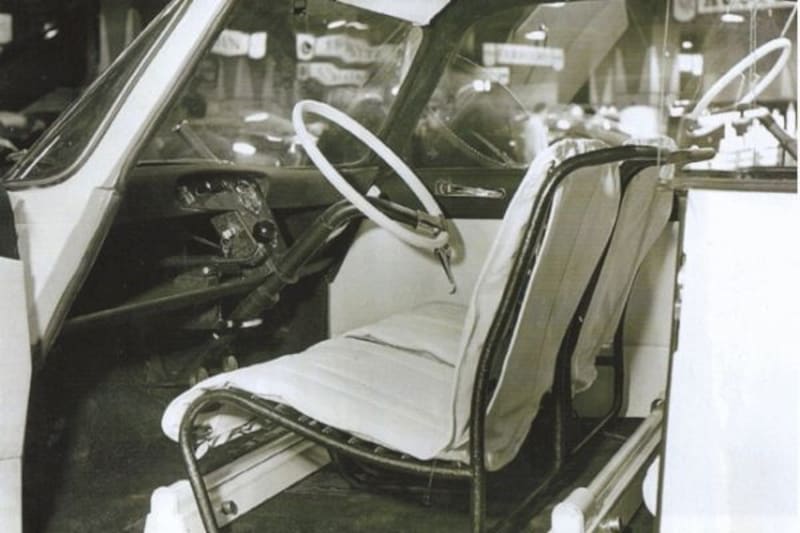
The Citroën 2CV was of course immensely popular on the European mainland. In England, the ‘Duck’, as the model is popularly called, was less successful. That is why Citroën came up with a model that was specifically intended for the English market: the Bijou.
‘Jewel’ is the literal translation of Bijou. Citroën unveiled the model at the London Motor Show in October 1959. The Bijou was designed very differently from the 2CV. It stands on the same chassis with a similar wheelbase, but is 10 centimeters longer, 6.9 centimeters wider and – the most notable difference – 43.2 centimeters lower than its French brother. However, it is not only the height difference that makes for a completely different look than the 2CV. The fenders of the Bijou are in fact not knocked out, the headlights form one whole with the body and the silhouette is also different. The Bijou is a two-door coupé, where the 2CV has four doors and a roofline that extends to the rear. It was designed by Peter Kirwan-Taylor, who also designed the Lotus Elite.

Citroën Bijou
With the styling of the Bijou, Citroën hoped to appeal to the more conservative audience in England. Initially, the English did not like the eccentric Frenchman much. The Bijou did have the 12 hp 425 cc two-cylinder from the 2CV under the hood. That power source did not exactly provide a spectacular performance, especially considering the fact that the Bijou was around 70 kg heavier than the 2CV. He did not reach 100 km / h. The sprint from a standstill to another ‘lap speed’, took 40 mph (64 km / h) according to the English magazine The Motor a whopping 41.7 seconds. Once he was up and running, the Bijou went a bit further than the 2CV then available: it had a top speed of 80 km / h compared to 75 km / h for the 2CV. This difference is mainly due to the improved aerodynamics due to the lower roof line. This also resulted in marginally better consumption.
Wrong molds
The Bijou was built at Citroën’s English factory in Slough. Since the model was exclusively intended for the English market, the steering wheel was always on the right. The interior was quite similar to that of the 2CV, with the one-spoke steering wheel, the position of the gear lever and the shape of the seats as the most striking similarities. Instead of the rectangular speedometer from the 2CV, the Bijou had round counters. For a while it was rumored that the windscreen of the Bijou was the rear window of the DS Safari, but this turned out to be wrong.
Fiberglass was used for the body of the Bijou. The molds for this were initially supplied by the English company Whitson & Co., but that turned out not to be a resounding success. The molds all had a different format, something that is obviously not desirable for a series-produced car. That is why Citroën decided to work with another supplier, but it is not known which one that is. Incidentally, not many copies of the Bijou rolled off the band. From 1959 to 1964, only 207 units left the factory, making it one of the rarest series-produced Citroëns ever. It is reported that fewer than 40 units are still on the road today.

Citroën Bijou
The success that Citroën aimed for with the English public with the Bijou was therefore not realized. This is said to be mainly due to the price. The Bijou cost at that time converted namely € 791.45. Much more expensive than, for example, an Austin Mini, which came on the market around the same time as the Bijou and converted only € 587. So Citroën’s British approach has not worked. The curtain therefore fell prematurely for the Bijou. The 2CV, on the other hand, was produced until July 1990.
Image source: Wikimedia Commons, Curbsideclassic.com.